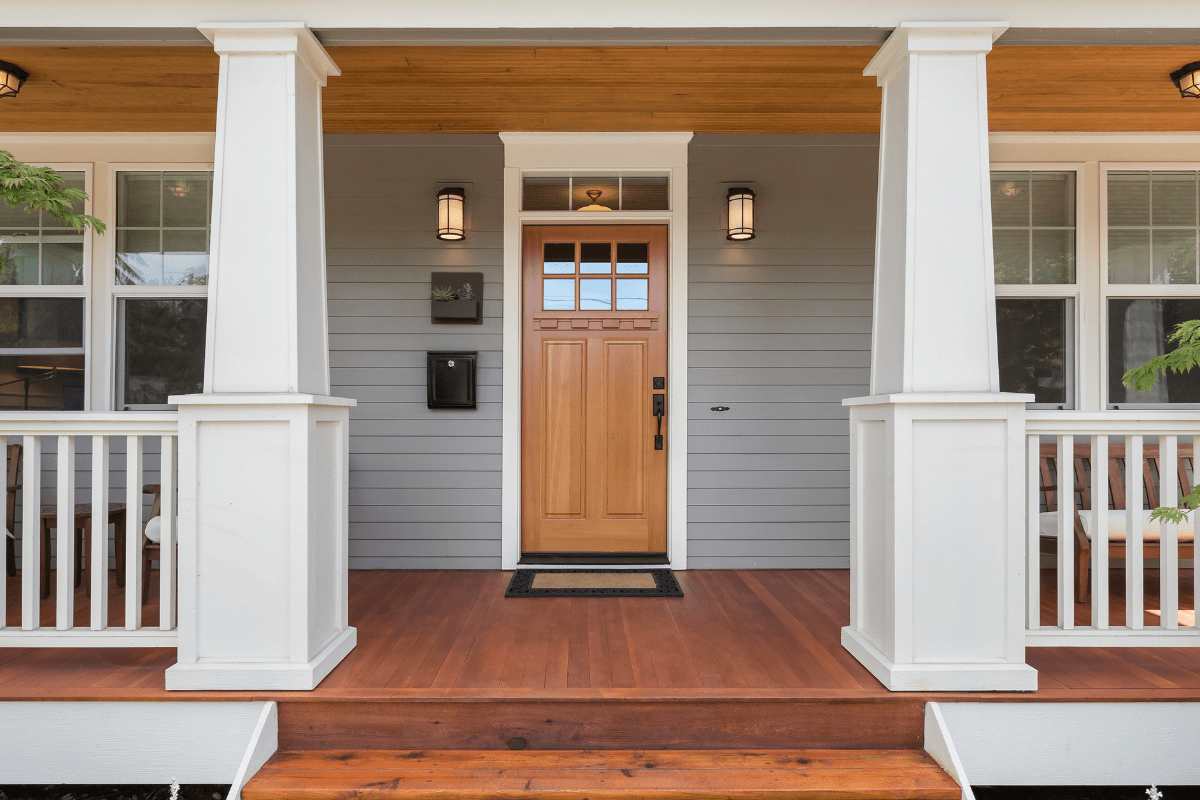Let's be honest: owning a home in Kentucky can feel like your wallet is in a constant wrestling match with your monthly bills. Between mortgage payments, utilities that spike faster than a thoroughbred at Churchill Downs, and that mysterious property tax bill that shows up like an unwanted relative, the average Kentucky homeowner shells out $9,744 annually just to keep the lights on and the roof intact.
The big-ticket savings you're probably missing
Here's something that might make you spit out your sweet tea: Kentucky is about to unleash $67 million in energy rebate programs this spring, and most homeowners have no clue it's coming.
The mother lode of rebates launching in 2025
The Kentucky Home Energy Rebates Program is basically Christmas in springtime for homeowners. We're talking up to $8,000 for whole-home improvements if you can prove you'll cut energy use by at least 15%. And before you start thinking this is only for folks driving Teslas and composting their coffee grounds, here's the kicker: low-income households can get 80% of their project costs covered. That's right, if your household makes less than 80% of the area median income, the government will essentially pay for most of your home improvements.
The program splits into two parts that sound like government acronyms but are actually pretty straightforward. HOMES covers the big stuff like insulation and HVAC systems, while HEAR helps you replace that ancient refrigerator that's been humming louder than a bluegrass band since 1987. Moderate-income families still get 50% coverage, which beats paying full price any day of the week.
Your property tax secret weapon
While we're talking about money you're leaving on the table, let's discuss the homestead exemption that could save you around $392 every single year. If you're 65 or older, or if you're classified as totally disabled, Kentucky will knock $49,100 off your home's assessed value for tax purposes. They just increased this amount from $46,350, because apparently someone in Frankfort remembered that inflation exists.
Here's how this works in real money: Say your house is worth $200,000. With the exemption, you're only taxed on $150,900. At Kentucky's average property tax rate of 0.80%, that's nearly 400 bucks staying in your pocket instead of funding another government building renovation. The application deadline is December 31st each year, and you'll need Form 62A350 from your local Property Valuation Administrator. Pro tip: if you're a qualifying veteran or permanently disabled under Social Security, the exemption renews automatically. One less form to worry about.
Utility rebates hiding in plain sight
Your utility company might be sitting on a pile of rebate money with your name on it, and they're terrible at advertising it. Seriously, these programs are marketed about as well as a vegetarian restaurant at a bacon festival.
LG&E and KU customers hit the jackpot
If you're among the 880,000 customers served by LG&E or KU, you've got access to some serious cash back opportunities. They'll pay you actual money for buying ENERGY STAR appliances, and their WeCare Program offers completely free weatherization if your household income is at or below 200% of the federal poverty level. That's around $60,000 for a family of four, so more people qualify than you'd think.
They've also got this Peak Time Rebates program where they basically pay you to not use electricity when everyone else is blasting their AC. It's like getting paid to sweat a little in summer, except you can just go to the mall or a movie during peak hours and let someone else pay for the cooling.
Duke Energy's not-so-secret stash
Duke Energy Kentucky customers can grab up to $1,450 through their Smart $aver Program. Here's the breakdown that Duke's marketing department apparently forgot to mention:
- $800 instant rebates for HVAC improvements
- $400 for energy-efficient windows
- $300 for qualifying heat pumps
- Net metering for solar panels up to 30kW
The window rebate only applies to east, west, and south-facing windows because apparently Duke Energy understands how the sun works. And yes, you need to use their approved contractors, but the instant rebate means you don't have to float the money and wait for a check.
Slashing your insurance premiums without switching to a gecko
Kentucky homeowners pay an average of $2,060 annually for insurance, which is actually 15% below the national average. But here's where it gets interesting: you can stack discounts like you're building the world's tallest sandwich.
The discount buffet nobody talks about
Installing a security system can knock 5-15% off your premium, and if you go full Mission Impossible with a comprehensive monitored system, some insurers will cut your rate by 20%. That impact-resistant roof you've been putting off? It'll save you an average of 11% on premiums, which adds up fast when you're already paying two grand a year.
Here's my favorite insurance hack that sounds made up but isn't: just don't file claims. Seriously. Going claim-free for three years gets you 5% off, five years gets 6%, and if you can make it a decade without calling your insurance company, you're looking at 8% savings. Of course, this doesn't mean you should eat the cost of major damage, but maybe that minor fender bender in your driveway isn't worth the phone call.
The bundling bonanza
The biggest savings come from bundling your home and auto insurance, which sounds like something an insurance commercial made up but actually works. The average Kentucky household saves $813 annually by bundling. That's not a typo – eight hundred and thirteen dollars for making one phone call and consolidating your policies.
Cincinnati Financial starts policies at $1,379 annually, while other carriers can charge up to $4,286 for similar coverage. Shopping around isn't fun, but neither is overpaying by three thousand dollars because you're too loyal to your current insurer.
Federal tax credits that actually make sense
The federal government wants to pay you to make your house more efficient, and for once, the math actually works out in your favor.
The $3,200 annual gold mine
Through 2025, you can claim up to $3,200 annually in energy efficiency tax credits. Here's how to max it out:
The base credit covers $1,200 for things like insulation, windows, and doors. Then you can tack on another $2,000 specifically for heat pumps. The credit covers 30% of your costs, so you'll need to spend about $10,667 to hit the maximum. But here's the beauty: these improvements typically pay for themselves through energy savings within 5-7 years, and you get the tax credit immediately.
Windows and doors max out at $600 in credits, so don't go crazy replacing every window unless they're legitimately falling apart. Focus on the biggest energy drains first – usually that's insulation and HVAC systems.
Getting paid to get an energy audit
A professional energy audit runs about $420 in Kentucky, but there's a $150 federal tax credit for it. More importantly, the audit tells you exactly where your money is leaking out of your house faster than water through a screen door. One homeowner I found in the research had a $697 February heating bill that made them finally get an audit. Turns out their attic insulation was basically decorative at that point.
Assistance programs that don't require a law degree to understand
Kentucky has more assistance programs than a bourbon distillery has barrels, but most people don't know they exist or think they won't qualify.
LIHEAP: The utility bill lifeline
The Low Income Home Energy Assistance Program provides $50-$250 in one-time help if your household income is at or below 150% of the federal poverty level. That's about $46,000 for a family of three, so more people qualify than realize it.
Here's the 2024-2025 schedule:
- Fall help: October 28 – December 20
- Winter crisis: January 7 – March 31
- Spring assistance: April 15 – May 30
- Summer cooling: July 28 – September 12
The crisis assistance is clutch – if you're within four days of running out of heating fuel or facing disconnection, they'll fast-track your application.
Kentucky Housing Corporation programs
KHC runs several programs that make homeownership less financially terrifying. Their Down Payment Assistance gives you up to $10,000 as a 10-year loan at 3.75% interest. That's not free money, but it's cheap money, which is almost as good.
If COVID knocked your finances sideways, the Homeowner Assistance Fund offers up to $60,000 for mortgage and utility catch-up. The income limits are pretty generous, and they're not asking for your firstborn child as collateral.
For rural homeowners over 62, the USDA Section 504 program is like finding a twenty in your winter coat pocket, except it's potentially $10,000 in grants for home repairs. Younger folks can get loans up to $40,000, and in disaster areas, they'll go up to $55,000 combined assistance.
Smart maintenance that prevents stupid expenses
Here's a fun fact that's actually not fun at all: reactive maintenance costs three times more than preventive maintenance. It's like waiting until your car engine seizes up instead of changing the oil.
Kentucky's climate is trying to destroy your house
Our state's weather can't make up its mind. We get 70-80% humidity in summer that makes everything feel like a swamp, then winter temperatures that would make a polar bear reconsider. This bipolar climate means you need to budget 1-4% of your home's value annually for maintenance. On a $250,000 house, that's $2,500 to $10,000 per year.
The humidity is the real killer. Mold remediation costs between $1,150 and $3,400, which is a lot of money to spend on fuzzy stuff you don't want. Keep your indoor humidity between 30-50% and you'll avoid most moisture problems. A whole-home dehumidifier costs way less than explaining to your insurance company why your bathroom looks like a science experiment.
The going rates for fixing stuff
Based on Kentucky averages, here's what you'll pay when things break:
- HVAC tune-up: $130-$350
- Unclogging drains: $116
- New toilet install: $134
- Kitchen sink install: $139
- Gas line work: $31 per foot
That HVAC maintenance might seem pricey, but it's cheaper than the $2,000 average repair when your system dies in the middle of August. Plus, a well-maintained system uses about 15% less energy, which adds up fast when you're cooling a house in Kentucky summer.
The bottom line that'll make you smile
When you add it all up, Kentucky homeowners can realistically save $3,000 to $5,000 annually by working these programs and strategies. That's not pocket change – that's vacation money, college fund money, or "finally fixing that weird noise in the attic" money.
The state's property taxes are 47% below the national median, our electricity rates are reasonable at 9.43¢ per kWh, and we've got more assistance programs than you can shake a stick at. The trick is actually using them instead of letting them sit there like unused gym memberships.
Start with the easy wins: apply for the homestead exemption if you qualify, get those utility rebates for any appliances you're planning to replace anyway, and for the love of all that's holy, check if you're overpaying for insurance. Then tackle the bigger stuff like energy improvements when that federal rebate program launches in spring.
Your house doesn't have to be a money pit. With a little effort and a lot of available programs, you can turn it into something that merely nibbles at your wallet instead of devouring it whole. And in this economy, that's about as close to winning as most of us are going to get.





